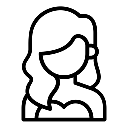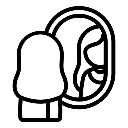
Cocoa Bean: Origins, Production, and Benefits
The cocoa bean is the starting point of chocolate, but there’s a lot more to it than just sweetness. From the cacao tree it grows on to how it’s farmed, processed, and used in everything from chocolate to skincare, the cocoa bean is full of stories, science, and health perks.
Let’s break down the history of cocoa, where it comes from, what it offers, and how global cocoa production in 2024 and 2025 is shaping the chocolate industry.
What Is a Cocoa Bean?
A cocoa bean is the seed of the cacao tree (Theobroma cacao), a tropical plant that grows best in humid climates near the equator. These beans are harvested from large pods that grow directly on the tree’s trunk or branches.
Inside each pod are 20–50 beans surrounded by a sweet, white pulp. Once fermented and dried, the beans take on that familiar chocolatey flavour we all love. They’re then roasted, cracked, and processed into products like cocoa butter and cocoa solids.
History of the Cocoa Bean
The history of cocoa goes way back, long before chocolate bars and hot chocolate became household staples.
Cocoa beans were first used by ancient Mesoamerican cultures like the Maya and Aztecs, who prized them for both flavour and ceremonial purposes. They were ground into drinks, often mixed with spices, and even used as currency.
When cocoa made its way to Europe in the 1500s, it quickly became a luxury item. Over time, new processes made chocolate more accessible, and cocoa farming expanded across Africa, South America, and Asia.
While we won’t go into full history mode, one thing is clear: cocoa beans have always held value - culturally, economically, and nutritionally.
Major Cocoa Bean Varieties
There are many types of cocoa beans, but most fall under a few main categories:
- Criollo: Often described as the “fine wine” of cocoa, Criollo is known for its delicate flavour and is less bitter than other types. It’s rare and mostly used in artisan chocolate.
- Forastero: The most commonly grown variety. It’s hardy, high-yielding, and used in most mass-market chocolate.
- Trinitario: A hybrid of Criollo and Forastero, Trinitario blends rich flavour with better disease resistance. It’s used in both premium and commercial chocolate products.
Modern cocoa breeding programs have also introduced other varieties like Amelonado and Nacional, each offering different benefits in terms of taste, yield, and disease resistance.
Global Cocoa Production in 2024
In 2024, global cocoa production was still largely concentrated in West Africa, with over 60% coming from just two countries: Côte d’Ivoire and Ghana. That year saw steady output, but concerns around sustainability, climate, and labour practices remained in focus.
Looking ahead, 2025 is expected to mark a major shift. According to the International Cocoa Organization, global cocoa supply is projected to grow by nearly 7.8%, reaching around 4.84 million tonnes, potentially creating the first supply surplus in three years.
Here’s a quick snapshot of where production is headed:
- Côte d’Ivoire: Still the world’s largest cocoa producer, with an estimated 2.37 million tonnes forecast for 2025.
- Ghana: Holding second place, with continued investment in traceability and sustainable farming.
- Indonesia: Southeast Asia’s top cocoa grower, expanding through modern hybrid varieties.
- Ecuador: Leading Latin America in fine-flavour cocoa, especially with Nacional strains.
- Nigeria & Cameroon: Increasing output, focusing on post-harvest quality and farmer training.
Factors like weather, disease outbreaks, and trade policy shifts will continue to impact how cocoa is grown, priced, and distributed. But with production on the rise, the global cocoa landscape from 2024 to now looks very different.
Nutritional and Health Benefits of Cocoa
Cocoa beans offer more than just flavour; they also bring real health value, especially in their raw or minimally processed forms.
Here’s what makes them shine:
- Rich in antioxidants: Especially flavonoids, which support heart health and circulation.
- Mood booster: Cocoa contains compounds like theobromine and phenylethylamine, known for their feel-good effects.
- Supports brain health: Some studies suggest cocoa flavonoids may help with focused memory, and reduced inflammation.
- Iron, magnesium, and fibre: Cocoa solids are a natural source of essential minerals and dietary fibre.
Of course, most of these benefits come from dark chocolate or raw cocoa, not sugar-heavy chocolate bars. The closer you get to pure cocoa solids, the better the benefits.
Lifespan and Growth of the Cocoa Tree
The cacao tree is a pretty picky plant. It grows best in tropical regions within 20 degrees of the equator, where humidity is high, and temperatures stay warm year-round.
Here’s what to know about its life cycle:
- First pods usually appear 3–5 years after planting.
- Peak production happens between years 5 and 10.
- Lifespan can reach 30 - 40 years, though productivity may drop over time.
Each tree can produce about 20 - 30 pods per year, and it takes around 400 beans to make just one pound of chocolate. That’s a whole lot of growing for just a little indulgence, which is why sustainable farming matters.
Cocoa Beans, Chocolate, and Beyond
Once cocoa beans are harvested and fermented, they’re processed into:
- Cocoa butter: The creamy fat used in chocolate, skincare, and more.
- Cocoa solids: The rich powder used in baking, drinks, and supplements.
- Chocolate liquor: A thick paste made from ground nibs, used as the base for chocolate.
Different chocolate processing methods (like conching or Dutching) change how the cocoa behaves and tastes, but it all starts with the bean.
Why Cocoa Beans Still Matter
Whether you’re into food, beauty, or just want to know what goes into your daily ILOVEUBABE XO treat, the cocoa bean is the root of it all. It’s where chocolate begins - but it also offers nutrients, history, and a look at how global farming is evolving in 2024.
From traditional cocoa bean varieties to modern, sustainable production, there’s so much to appreciate in one small seed.
Shop Collagen Infused Chocolate Gift Boxes
FIND HER PERFECT GIFT NOW
Guilt-Free Chocolate That Tastes Incredible XO












